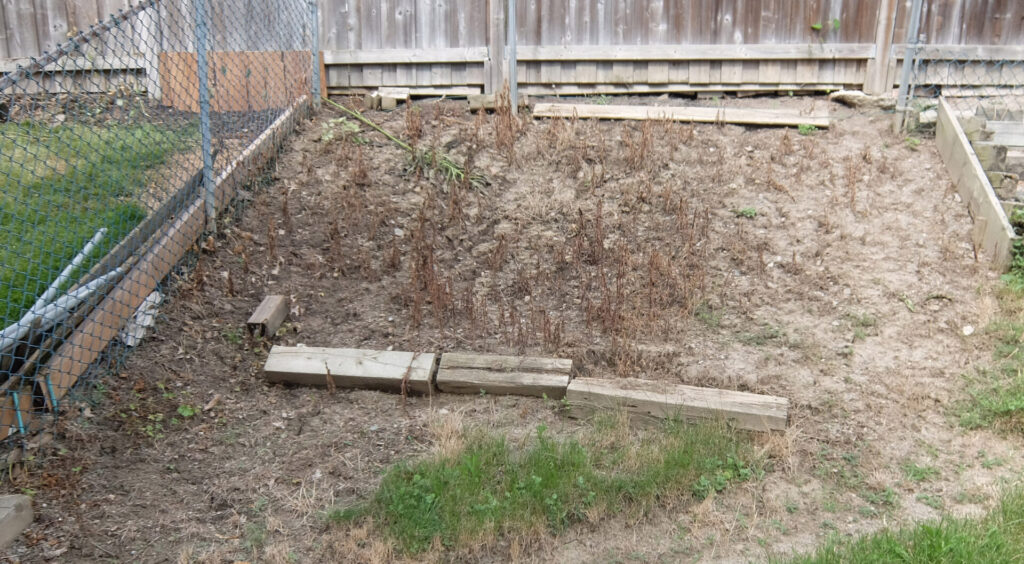
Hello Master Gardeners
In 2012 I re-graded a 3 level terrace back into a sloped hill and covered it with grass. However, since that time, I had left a portion uncovered due to its steepness and potential difficulty with cutting grass on that slope. I’ve attached a photo.
The area is in direct sunlight for all of the day and becomes quiet dry in the depths of summer. However, during heavy rain this area becomes “Niagara Falls” due to the influx of water from the adjacent neighbour’s property.
I was raised as a gardener but I have no experience with the selection of a proper ground cover for this hill. Given that it is still mid-May I thought I would take the opportunity this year to select and plant some appropriate ground cover.
I did not want to come empty handed so I did read through your “Popular broadleaf evergreen groundcovers”:
1) “Arctostaphylos uva–ursi, also called bearberry, or Kinnikinick”
2) “Cotoneaster (Cotoneaster dammeri) or Bearberry”
As I have never dealt with such shrubbery before, I did want to lay out some basic requirements:
– It should not creep everywhere as I do not wish it to get into my adjacent neighbour’s backyards.
– Its primary purpose is to push out the weeds which normally come to occupy this bare hill.
– It can deal with direct sunlight throughout the year and require little watering.
Thank you for the consideration of this request!
Thank you for contacting the Toronto Master Gardeners.
Selecting plant material that will provide an effective groundcover in full sun and prevent the soil from eroding, while supporting the biodiversity of the area is important. By covering the ground with a carpet of vegetation it prevents the germination of weed seeds. Once established it protects the soil from erosion, acts as an insulating cover for the soil and provides habitats and cover for beneficial insects.
Bearberry contoneaster (Cotoneaster dammeri ) is a rapid growing, mounding cover with pinkish-white flowers in May and colourful berries from September through to December. They need full sun or partial shade, and thrive in fertile soils but tolerate any soil as long as it is well-drained. Full sun will give the heaviest fruit display According to Dirr’s Encyclopedia of Trees & Shrubs ” Cotoneaster tends to become ratty with time and requires pruning to maintain neatness”. It’s a good idea to apply a thick layer of mulch around ground cover types soon after planting to suppress weeds, until the plant grows in and covers the soil.
Bearberry, Kinnikinnick ( Arctostaphylos uva-ursi ): This attractive and hardy plant is native to most of Canada, found in all provinces and territories and at various elevations, from sea level to sub-alpine. It is is generally drought, wind, salt and heat resistant. Its older stems tend to be reddish-brown to grey, fairly smooth and peeling, whereas new stems can be redder and covered with smooth hair. Bearberry is a great wildlife plant. It provides nectar, which has been known to attract butterfly caterpillars, butterflies and hummingbirds. Unlike cotoneaster, this shrub grows at a slow rate, and under ideal conditions can be expected to live for approximately 20 years. This plant grows best in acidic ( p/H.<6.8 ) sandy or rocky conditions. According to the Canadian Wildlife Federation: ” If your soil isn’t acidic, you can increase its acidity by adding some pine and oak trees to the side of your property where you hope to one day add bearberry.”
Happy Planting!

